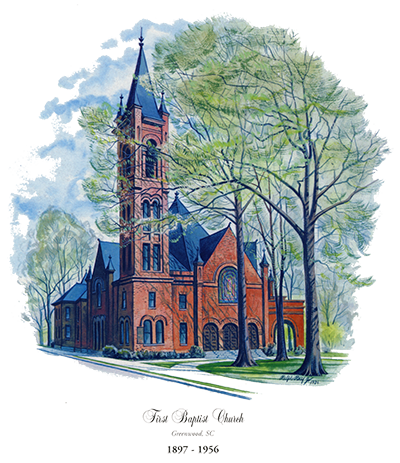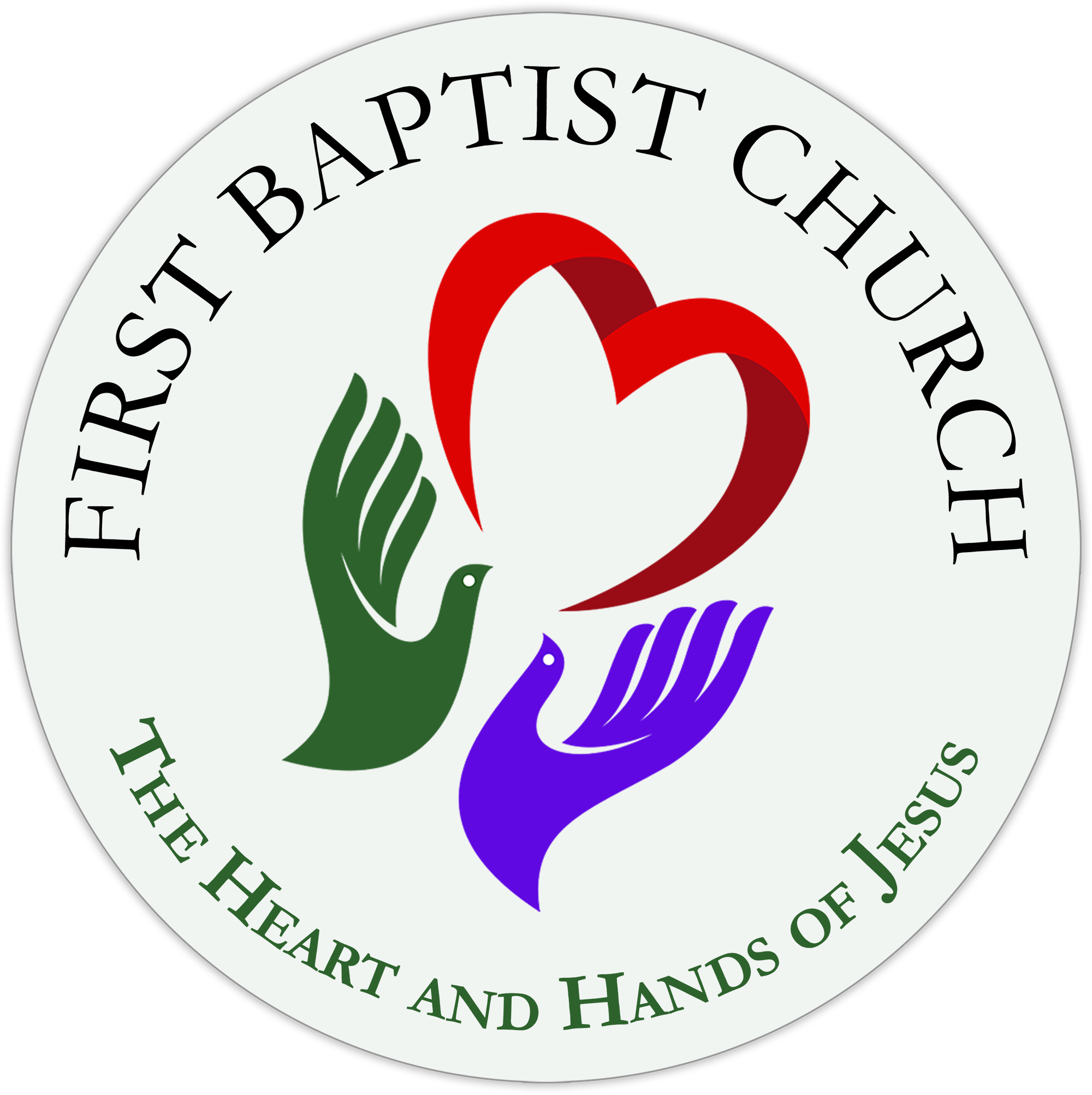Our History

A Brief History of First Baptist Church
The First Baptist Church of Greenwood was organized on September 25, 1870, with twenty-three persons present. The first building, a modest wood structure, was built in downtown Greenwood in 1870. The second church building, a much larger building made of brick, was dedicated on November 7, 1897. In the mid-twentieth century, the church decided to move to a new site, its present location on Grace Street. The groundbreaking took place in 1954, and the congregation began to meet in its new facilities on August 5, 1956. On the first Sunday of 1968, the church broke ground for a new sanctuary. The congregation worshiped in the new sanctuary for the first time on Palm Sunday of 1971. After the sanctuary’s completion, the former worship space was converted into the present fellowship hall. The sanctuary is widely known for its cathedral-like stature, the beautiful stained-glass windows (with symbols from the parables of Jesus on one side and from the miracles of Jesus on the other), the divided chancel, and the cross as its unmistakable focal point. In 2007, the church began a major renovation of its education and children’s area; and in 2008, it started the last addition to the facility, a covered drive.
The history of First Baptist is far too rich to capture on a single page, but several highlights may be noted. FBC has always been a missions-minded church, having begun the South Main Baptist Church as a mission church in 1910. FBC has participated in and contributed to numerous community ministries, helping to provide food, shelter, medical care, and other services to people in the Lakelands area. From the founding of Connie Maxwell Children’s Home in 1888 until the establishment of Connie Maxwell Baptist Church in 1912, FBC was the spiritual home of the Connie Maxwell children and staff. FBC birthed the Bowers-Rodgers Children’s Home in 1989 and the United Center for Community Care in 2008. Members of FBC were critical to the establishment of the Greenwood Pathway House in 2013; and in 2020, the church made building a Habitat House the centerpiece of its 150th Anniversary celebration.
The church has always affirmed the status and giftedness of women. From its inception, First Baptist Church gave women the right to vote on any matter which came before the church—a practice virtually unheard of in 1870—and in 1975, FBC ordained the first female Baptist deacon in the state of South Carolina. First Baptist has a long history of meaningful worship and beautiful music which are well-suited to its magnificent sanctuary.
The most important element of the church’s history is its focus on the Lordship of Christ, followed by its commitment to the historic Baptist principle of the autonomy of the local church. These principles were clearly evidenced in 1970 when the church decided to accept any form of Christian baptism. In doing so, the congregation affirmed Christ’s Lordship—they sought God’s will rather than blindly following tradition (a very deeply entrenched tradition)—and they practiced their autonomy by following God’s will even when the local association of churches expelled FBC from its membership.
When the Cooperative Baptist Fellowship was formed in May of 1991, FBC found a new home. The church’s traditions—the lordship of Christ, God-centered worship, local church autonomy, passion for missions, the affirmation of women as God-called leaders—these and other qualities made the church a natural fit for CBF life. FBC consistently ranks as one of the top givers to the Beverly Greer Offering for State Missions, and many of its members have held positions of service and leadership in CBFSC. It is not surprising, then, that FBC is considered one of the flagship churches in CBF of South Carolina.
Sign Up for Text Alerts from FBC

